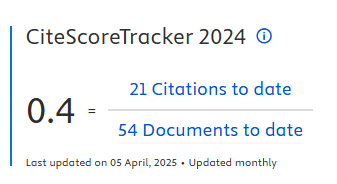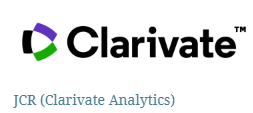Identification of critical factors affecting the students’ acceptance of Learning Management System (LMS) in Saudi Arabia
DOI:
https://doi.org/10.5585/iji.v9i2.19652Keywords:
Learning Management System, Unified theory of acceptance and use of technology, Behavioural intention to use, Regression analysis.Abstract
Objective of the study: The objective is to identify factors that influence student’s acceptance of Learning Management System (LMS) using the Unified Theory of Acceptance and Use of Technology (UTAUT) model. This study investigates how UTAUT factors affect students’ intention and attitudes to use Blackboard as a LMS at King Abdulaziz University in Saudi Arabia.
Methodology/approach: This study proposes a research model based on UTAUT factors ‘Effort Expectancy (EE), Performance Expectancy (PE), Perceived Functionality (PF), Facilitating Condition (FC), Social Influence (SI)’, Behavioural Intention to use (BI) and Usage Behaviour. The survey research methodology was adopted using questionnaire to identifying factors that influencing the students’ intention and attitudes towards LMS.
Originality/relevance: The study relates corporate LMS to support educational institutions to enhance the students’ acceptance and attitudes to use in Saudi Arabia.
Main result: The results indicate that PE, PF, FC and SI factors were significant and directly influence on students' BI Blackboard. Both PE and FC are second factors that affect students’ intention and EE factor does not impact the student's BI.
Theoretical/methodological contributions: The study contributes to the body of knowledge in developing the research model using UTAUT model by showing the factors affecting the students’ intention in using LMS and usage behavior in Saudi Arabia.
Social/management contributions: This study contributes in understanding the critical factors affecting the Saudi Arabia students’ intentions in using Blackboard. Another study should be extended to other universities by using different methods to test the model and incorporate different moderating factors to accept and use the Blackboard.
Downloads
References
Al-Adwan, A., Al-Adwan, A. & Smedley, J., (2013), Exploring students acceptance of e-learning using Technology Acceptance Model in Jordanian universities. International Journal of Education and Development using ICT. 9(2). http://ijedict.dec.uwi.edu//viewarticle.php?id=1617
Al-Busaidi, K.A. & Al-Shihi, H., (2010), Instructors' acceptance of learning management systems: A theoretical framework. Communications of the IBIMA, 2010(2010): p. 1-10. https://ibimapublishing.com/articles/CIBIMA/2010/862128/
Alharbi, S. & Drew, S., (2014), Using the technology acceptance model in understanding academics’ behavioural intention to use learning management systems. International Journal of Advanced Computer Science and Applications. 5(1): p. 143-155. https://dx.doi.org/10.14569/IJACSA.2014.050120
Alia, A., (2017), An investigation of the application of the Technology Acceptance Model (TAM) to evaluate instructors’ perspectives on E-Learning at Kuwait University, Dublin City University. http://doras.dcu.ie/21586/
Alkhattabi, M., Neagu, D., & Cullen, A., (2011), Assessing information quality of e-learning systems: a web mining approach. Computers in Human Behavior, 27(2): p. 862-873. https://doi.org/10.1016/j.chb.2010.11.011
Almaiah, M.A., Al-Khasawneh, A., & Althunibat, A., (2020), Exploring the critical challenges and factors influencing the E-learning system usage during COVID-19 pandemic. Education and Information Technologies, p. 1. https://doi.org/10.1007/s10639-020-10219-y
Alshehri, A., Rutter, M.J., & Smith, S., (2019), An implementation of the UTAUT model for understanding Students' perceptions of learning management systems: A study within tertiary institutions in Saudi Arabia. International Journal of Distance Education Technologies (IJDET). 17(3): p. 1-24. https://doi.org/10.4018/IJDET.2019070101
Bhrommalee, P., (2011), Student acceptance of web-based learning: A quantitative analysis within a public university in Thailand, Walden University. https://www.learntechlib.org/p/120983/.
Bouhnik, D. & Marcus, T., (2006), Interaction in distance‐learning courses. Journal of the American Society for Information Science and Technology. 57(3): p. 299-305. https://doi.org/10.1002/asi.20277
Bousbahi, F. & Alrazgan, M.S., (2015), Investigating IT faculty resistance to learning management system adoption using latent variables in an acceptance technology model. The Scientific World Journal, 2015. https://doi.org/10.1155/2015/375651
Buabeng-Andoh, C. & Baah, C., (2019), Investigating the actual usage of learning management system: From perspectives of University students. in 2019 International Conference on Computing, Computational Modelling and Applications (ICCMA). IEEE. http://ir.uew.edu.gh/xmlui/handle/123456789/264
Byungura, J.C. (2015), E-learning management system for thesis process support from a supervisor perspective: The case of SciPro System at University of Rwanda, Jönköping University: Sweden. http://hj.diva-portal.org/smash/record.jsf?pid=diva2%3A840593&dswid=-9660
Carmines, E.G. & Zeller, R.A., (1979), Reliability and validity assessment. Vol. 17: Sage publications. https://dx.doi.org/10.4135/9781412985642
Chao, C.-M., (2019), Factors determining the behavioral intention to use mobile learning: An application and extension of the UTAUT model. Frontiers in psychology. 10: p. 1652. https://doi.org/10.3389/fpsyg.2019.01652
Chatterjee, S. & Simonoff, J.S., (2013), Handbook of regression analysis. Vol. 5: John Wiley & Sons. https://doi.org/10.1111/insr.12020_22
Claar, C., Portolese Dias, L., & Shields, R., (2014), STUDENT ACCEPTENCE OF LEARNING MANAGEMENT SYSTEMS: A STUDY ON DEMOGRAPHICS. Issues in Information Systems. 15(1). https://doi.org/10.48009/1_iis_2014_409-417
Dečman, M., (2015), Modeling the acceptance of e-learning in mandatory environments of higher education: The influence of previous education and gender. Computers in human behavior. 49: p. 272-281. https://doi.org/10.1016/j.chb.2015.03.022
Draper, N.R. & Smith, H., (1998), Applied regression analysis. Vol. 326., John Wiley & Sons. https://www.wiley.com/en-us/Applied+Regression+Analysis%2C+3rd+Edition-p-9780471170822
Dutton, J., Dutton, M., & Perry, J., (2001), Do online students perform as well as lecture students? Journal of Engineering education,. 90(1): p. 131-136. https://doi.org/10.1002/j.2168-9830.2001.tb00580.x
Estriegana, R., Medina-Merodio, J.-A., & Barchino, R., (2019), Student acceptance of virtual laboratory and practical work: An extension of the technology acceptance model. Computers & Education. 135: p. 1-14. https://www.learntechlib.org/p/208189/
Farahat, T., (2012), Applying the technology acceptance model to online learning in the Egyptian universities. Procedia-Social and Behavioral Sciences. 64: p. 95-104. http://dx.doi.org/10.1016/j.sbspro.2012.11.012
Fianu, E., et al., (2018), Factors affecting MOOC usage by students in selected Ghanaian universities. Education Sciences. 8(2): p. 70. https://doi.org/10.3390/educsci8020070
Juárez Santiago, B., et al., (2020), Learning Management System-Based Evaluation to Determine Academic Efficiency Performance. Sustainability. 12(10): p. 4256. https://doi.org/10.3390/su12104256
Juhary, J., (2014), Perceived Usefulness and Ease of Use of the Learning Management System as a Learning Tool. International Education Studies. 7(8): p. 23-34. http://dx.doi.org/10.5539/ies.v7n8p23
Liu, S.-H., Liao, H.-L., & Peng, C.-J., (2005), Applying the technology acceptance model and flow theory to online e-learning users’ acceptance behavior. E-learning. 4(H6): p. H8. https://doi.org/10.48009/2_iis_2005_175-181
Mabed, M. & Koehler, T., (2012), An empirical investigation of students’ acceptance of OLAT as an open web-based learning system in an Egyptian Vocational Education School. International Journal of Web-Based Learning and Teaching Technologies (IJWLTT). 7(1): p. 36-53. https://doi.org/10.4018/jwltt.2012010103
Malhotra, N. & Birks, D., (2007), Marketing Research: an applied approach: 3rd European Edition: Pearson education. http://dx.doi.org/10.1108/S1548-6435(2006)2
Moreno, V., Cavazotte, F., & Alves, I., (2017), Explaining university students’ effective use of e‐learning platforms. British Journal of Educational Technology. 48(4): p. 995-1009. https://doi.org/10.1111/bjet.12469
Paulsen, M.F., (2002), Online education systems: Discussion and definition of terms. NKI distance education. 202: p. 1-8. https://www.porto.ucp.pt/open/curso/modulos/doc/Definition%20of%20Terms.pdf
Paulsen, M.F., (2003), Experiences with learning management systems in 113 European institutions. Journal of Educational Technology & Society. 6(4): p. 134-148. http://ifets.ieee.org/periodical/6_4/13.pdf
Pituch, K.A. & Lee, Y.-k., (2006), The influence of system characteristics on e-learning use. Computers & Education. 47(2): p. 222-244. https://doi:10.1016/j.compedu.2004.10.007
Rahman, N., Rosman, A. & Sahabudin N., (2020),. Students’ Continuance of Using E-Learning System: A Review of Conceptual Frameworks. in IOP Conference Series: Materials Science and Engineering. IOP Publishing. http://dx.doi.org/10.1088/1757-899X/769/1/012044
Revythi, A. & Tselios, N., (2017), Extension of Technology Acceptance Model by using System Usability Scale to assess behavioral intention to use e-learning. Education and Information Technologies. 24(4): p. 2341-2355. https://doi.org/10.1007/s10639-019-09869-4
Saade, R., F. Nebebe, & Tan, W., (2007), Viability of the" technology acceptance model" in multimedia learning environments: A comparative study. Interdisciplinary Journal of E-Learning and Learning Objects. 3(1): p. 175-184. http://dx.doi.org/10.28945/392
Saadé, R.G. & Kira, D., (2006), The emotional state of technology acceptance. Issues in Informing Science & Information Technology,. 3. http://dx.doi.org/10.28945/913
Salloum, S.A. & Shaalan, K., (2018), Factors affecting students’ acceptance of e-learning system in higher education using UTAUT and structural equation modeling approaches. in International Conference on Advanced Intelligent Systems and Informatics. 2018. Springer. https://doi.org/10.1007/978-3-319-99010-1_43
Sattari, A., Abdekhoda, M. & Zarea Gavgani, V., (2017), Determinant factors affecting the web–based training acceptance by health students, applying UTAUT model. International Journal of Emerging Technologies in Learnming. 12(10): p. 112-126. https://doi.org/10.3991/ijet.v12i10,7258
Schumacker, R.E. & Lomax, R.G., (2004), A beginner's guide to structural equation modeling, psychology press. http://dx.doi.org/10.4324/9781410610904
Shen, D., et al., (2006), Social influence for perceived usefulness and ease-of-use of course delivery systems. Journal of Interactive Online Learning. 5(3): p. 270-282. https://www.ncolr.org/jiol/issues/pdf/5.3.4.pdf
Stage, F.K., (1988), University attrition: LISREL with logistic regression for the persistence criterion. Research in Higher Education. 29(4): p. 343-357. https://doi.org/10.1007/BF00992775
Swesi, K., (2012), An Investigation into the Influence of Learning Styles and other Factors Affecting Students’ Perception of Virtual Learning Environments. https://dora.dmu.ac.uk/handle/2086/7105
Tarhini, A., et al., (2015), Towards the Acceptance of RSS to Support Learning: An empirical study to validate the Technology Acceptance Model in Lebanon. Electronic Journal of e-Learning. 13(1): p. 30-41. https://files.eric.ed.gov/fulltext/EJ1051840.pdf
Tarhini, A., et al., (2017), Examining the moderating effect of individual-level cultural values on users’ acceptance of E-learning in developing countries: a structural equation modeling of an extended technology acceptance model. Interactive Learning Environments. 25(3): p. 306-328. https://doi.org/10.1080/10494820.2015.1122635
Ülker, D. & Yılmaz Y., (2016), Learning management systems and comparison of open source learning management systems and proprietary learning management systems. Journal of systems integration. 7(2): p. 18-24. http://dx.doi.org/10.20470/jsi.v7i2.255
Vasanthi Muniasamy, D., Ejalani, I.M., & Anandhavalli M., (2014), Prediction of Learner Perception and Acceptance of E-Learning System for Learning with TAM (Technology Acceptance Model) in King Khalid University, Kingdom of Saudi Arabia. International Journal of Emerging Technology and Advanced Engineering. https://www.semanticscholar.org/paper/Prediction-of-Learner-Perception-and-Acceptance-of-Muniasamy-Eljailani/91a6aa9f311b7b90e65d74fd1c1513302fb41c2a
Venkatesh, V. & Davis, F.D., (2000), A theoretical extension of the technology acceptance model: Four longitudinal field studies. Management science. 46(2): p. 186-204. http://dx.doi.org/10.1287/mnsc.46.2.186.11926
Venkatesh, V., et al., (2003), User acceptance of information technology: Toward a unified view. MIS quarterly: p. 425-478. http://dx.doi.org/10.2307/30036540
Wang, H.Y. & Wang, Y.S., (2008), Gender differences in the perception and acceptance of online games. British Journal of Educational Technology. 39(5): p. 787-806. https://doi.org/10.1111/j.1467-8535.2007.00773.x
Yeou, M., (2016), An investigation of students’ acceptance of Moodle in a blended learning setting using technology acceptance model. Journal of Educational Technology Systems. 44(3): p. 300-318. http://dx.doi.org/10.1177/0047239515618464
Žuvić-Butorac, M., et al., (2011), Blended e-learning in higher education: Research on students’ perspective. Issues in Informing Science and Information Technology. 8: p. 409. https://doi.org/10.28945/1427
Downloads
Published
How to Cite
Issue
Section
License
Copyright (c) 2021 Amjad Alharbi, Nahla Aljojo, Azida Zainol, Areej Alshutayri, Basma Alharbi, Eman Aldhahri, Enas Fawzi Khairullah, Seita Almandeel

This work is licensed under a Creative Commons Attribution-NonCommercial-ShareAlike 4.0 International License.
- Abstract 912
- PDF 930











